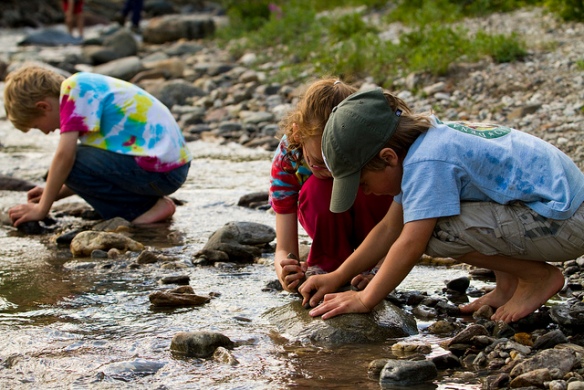When your child is in fourth grade or so, she will begin learning about the scientific method. It will be taught in science class, and very likely described as ‘the method that scientists use’. She will be told that in order to achieve accuracy, all scientific investigations must follow these important set of steps. While all this is perfectly true, it also sounds pretty complex. After all, fourth graders are a long way away from becoming scientists. And terms like ‘scientific investigation’ and ‘accuracy’ may inadvertently be a put-off for them. And that is quite unfortunate, especially when you consider the fact that your fourth grader is, in all probability, already using the scientific method. On a regular basis. Only, she doesn’t realize it.
Instead of making her feel like she is learning something that could have waited a few more years, why not simplify the scientific method for kids? Explain to her that she is already thinking like a scientist when she tries to solve problems or answer questions in her everyday life. Like the time she thought her friend Anna was upset with her. Or when she realized that her school bag was wet. Ask her to go over the thought process that helped her find answers to her questions. And draw parallels between the way she thought and the scientific method of investigation.
 “Science for Fun” by Denali National Park and Preserve is licensed under CC BY 2.0
“Science for Fun” by Denali National Park and Preserve is licensed under CC BY 2.0
For example, when did your daughter (let’s call her Lucy to avoid confusion) first feel Anna was upset with her? Lucy observed that her friend was behaving a little differently. Anna borrowed an eraser from Dave instead of asking Lucy like she usually did. And during the break, Anna ran out to play without waiting for Lucy to put her books away. Observing something that piques your curiosity is the first step in any scientific investigation. Based on her observation, Lucy made an assumption, also known as a hypothesis. She assumed that her friend was upset with her. She wanted to make sure she was right, so as soon as she put her books away, she ran out to find Anna. She found her near the canteen, and tried to smile at her. Anna immediately smiled back. This wasn’t in accordance with her assumption. Lucy then asked Anna whether she would play on her team in the basketball game later that day, to which Anna replied ‘Of course!’ What Lucy was doing here was looking for data that supported her hypothesis. However, all the evidence she collected pointed to the contrary. On analyzing her data, Lucy concluded that her hypothesis was wrong, and that Anna was not upset with her after all. In thinking carefully and meticulously, Anna used the very same steps that scientists use in their investigations, also known as the scientific method! Point out to your daughter that skipping any of these steps could make her reasoning faulty, and result in a different set of events altogether.
To make sure she understood the scientific method, ask her to see whether she can identify all the different steps from the time that she realized her school bag was wet. She must mention how she observed the wet patch below her bag, assumed (or hypothesized) that the bench she was sitting on was wet, and checked the seat for signs of dampness. On analyzing her findings, she concluded that her hypothesis was wrong. She then made a new hypothesis – perhaps the water from her bottle had spilled inside her bag! To test this hypothesis, she opened the compartment where she kept her bottle and looked inside. The insides were considerably wet. She then took out the bottle and tilted it to see whether it was leaking. It was! On analyzing her findings, she concluded that her hypothesis was correct.
Using simple examples from everyday life is a great way to simplify the scientific method for kids. It not only helps them understand the steps involved and the meanings of the various terms, it also helps them recognize the thought process they generally use while trying to solve problems. As they understand the significance of each step, children will be able to monitor their thinking in the future and ensure that they approach problem-solving in a systematic, scientific manner. It helps kids realize that science and scientific thinking exist outside the science classroom and are merely guidelines for understanding the world around us.



